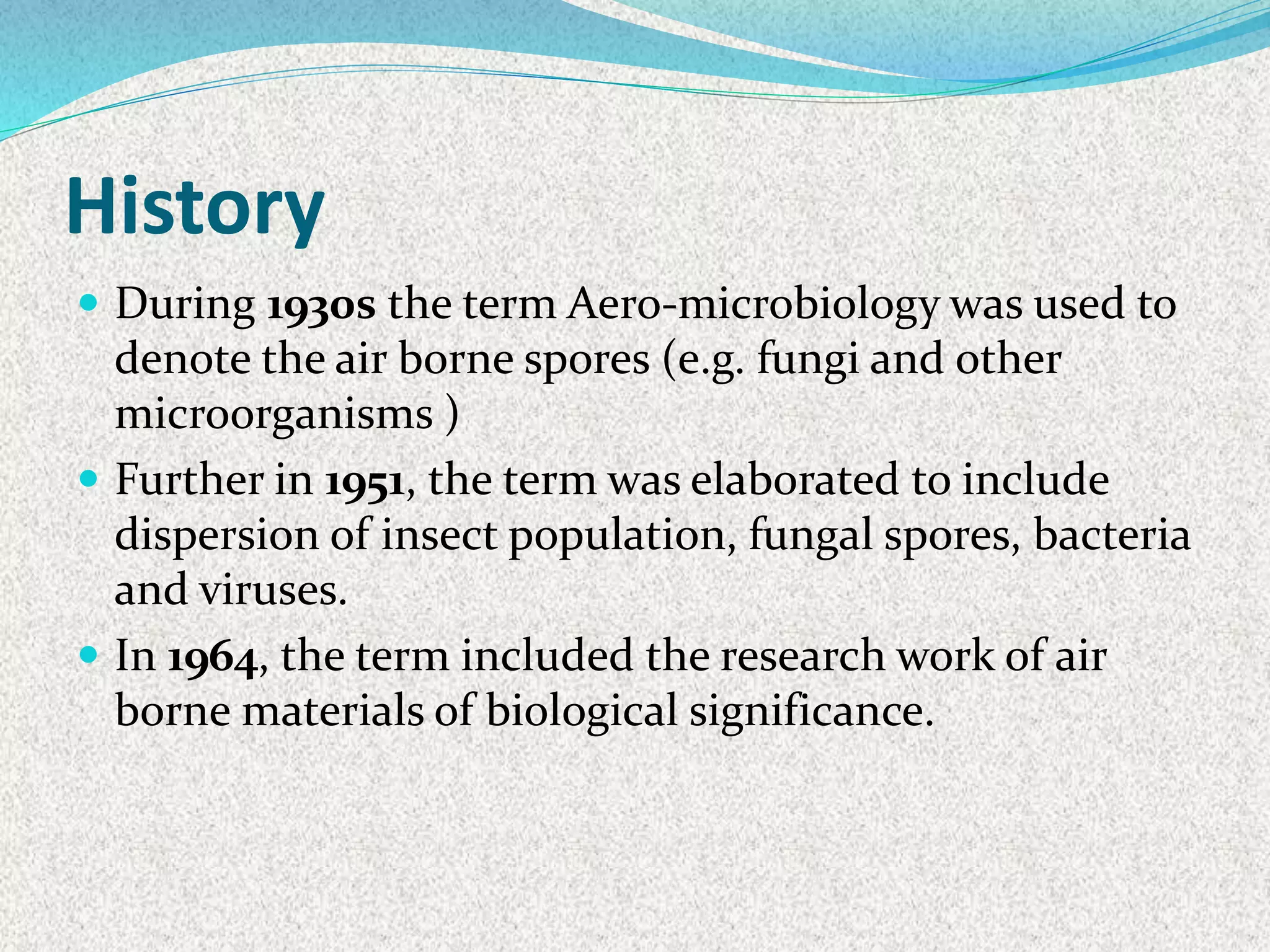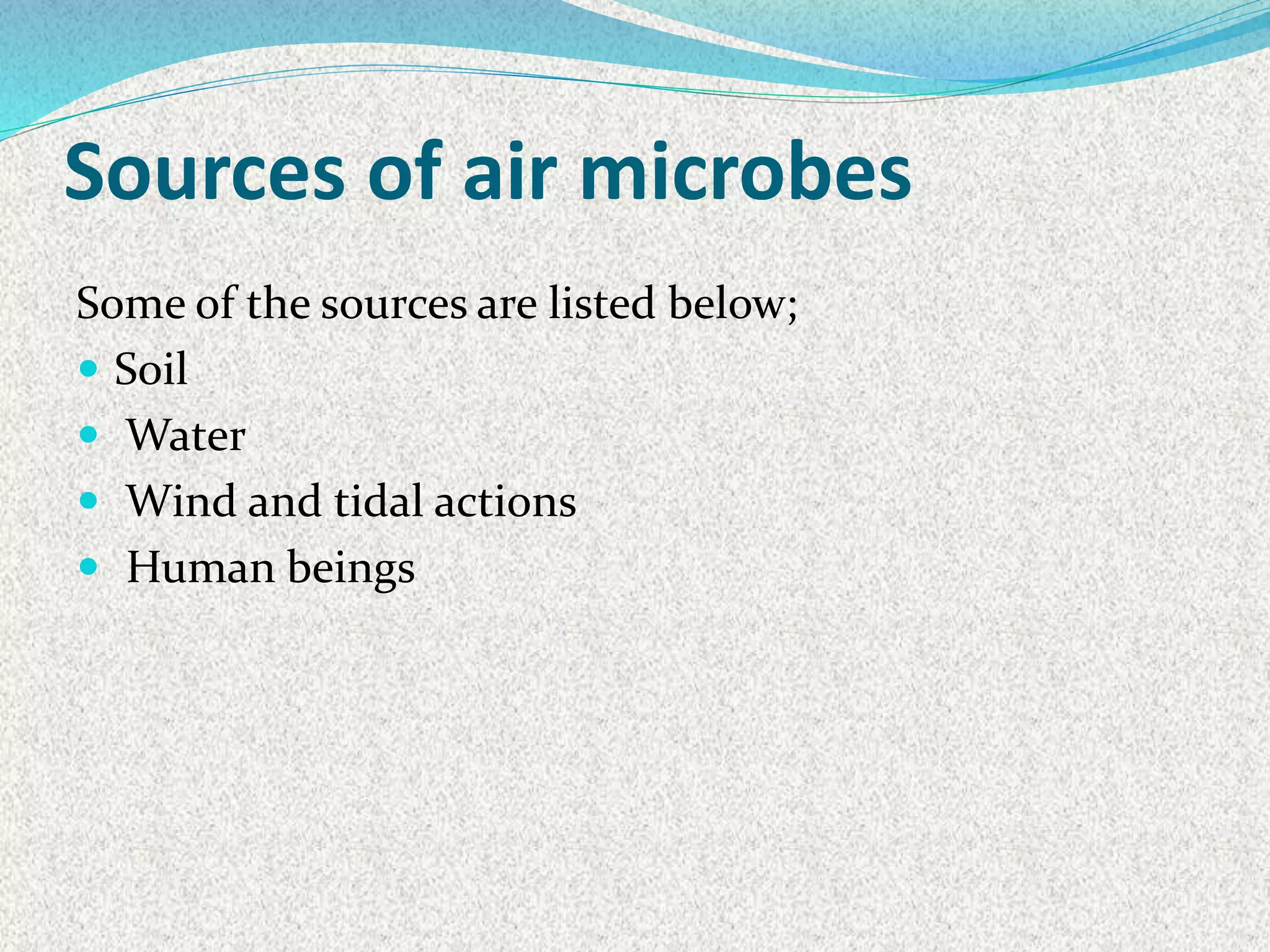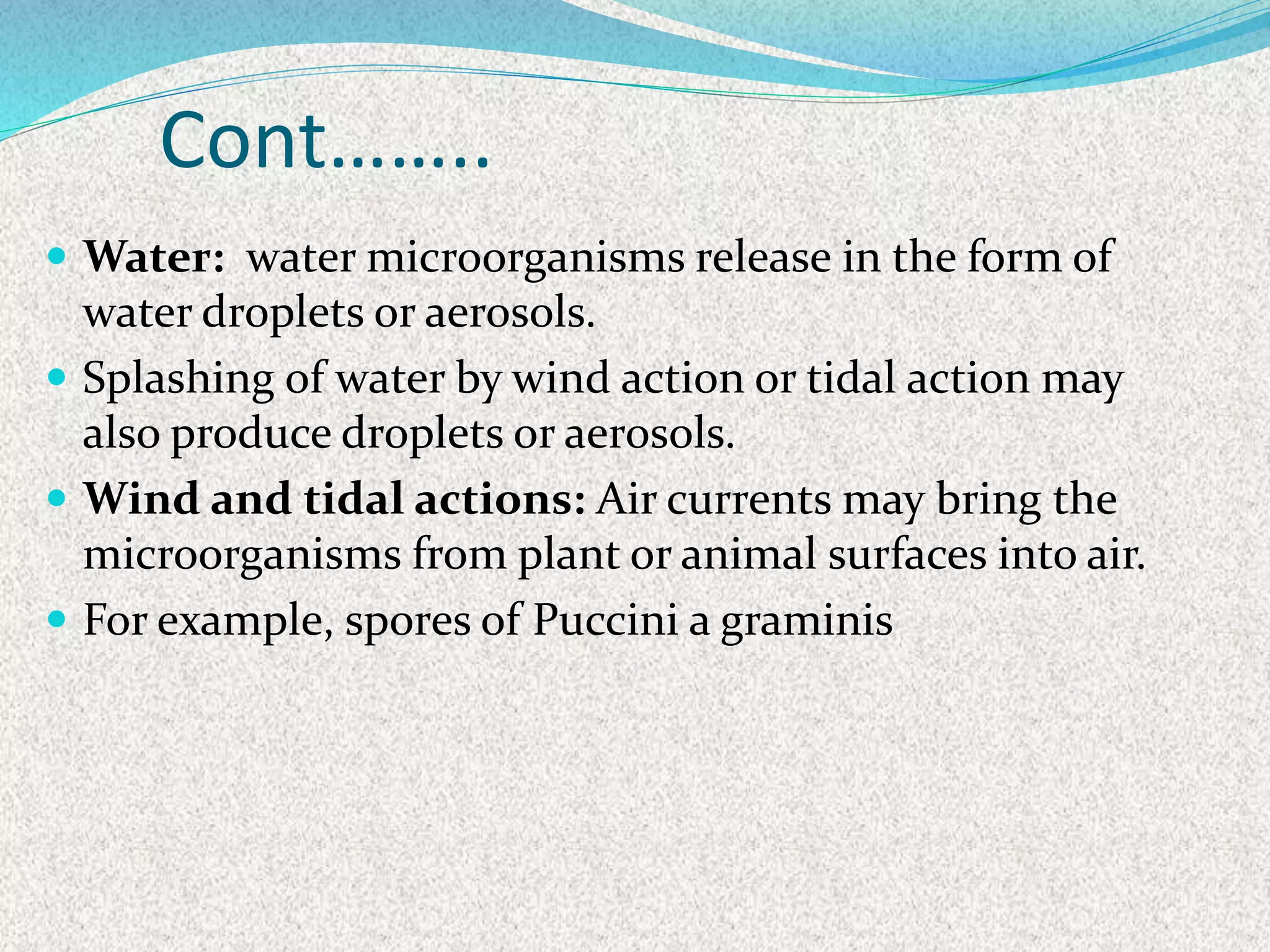The document discusses the field of microbiology with a focus on aerobiology, which studies microorganisms suspended in the air, their sources, and transmission routes. It highlights the significance of airborne microbes in human health, including their role in diseases, especially in hospital settings, and details various control mechanisms for bioaerosols. Additionally, it addresses various airborne diseases such as influenza, tuberculosis, measles, and mumps, emphasizing their contagious nature and potential health impacts.


























































